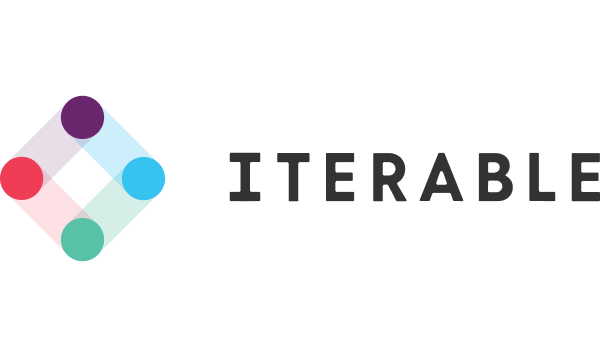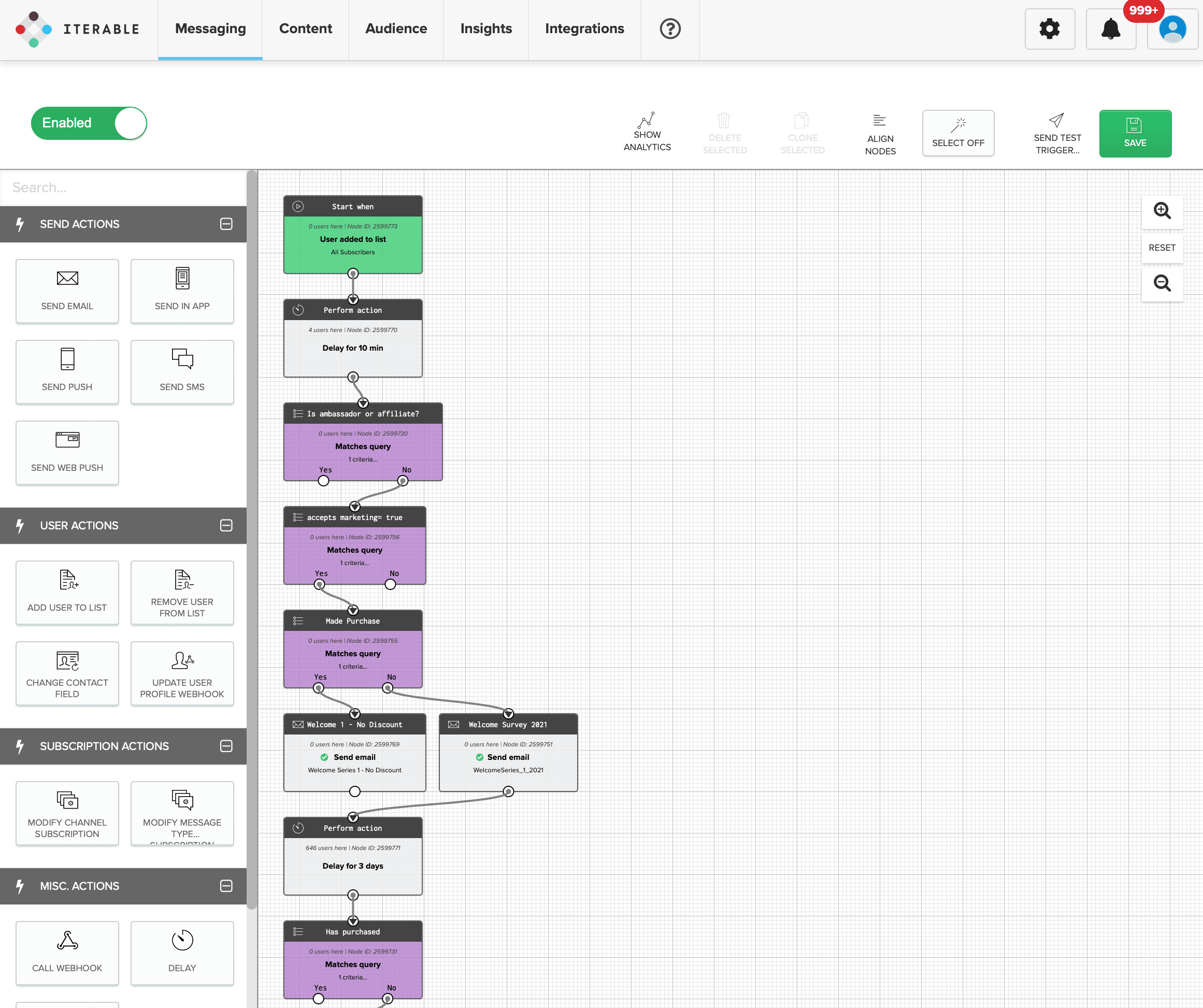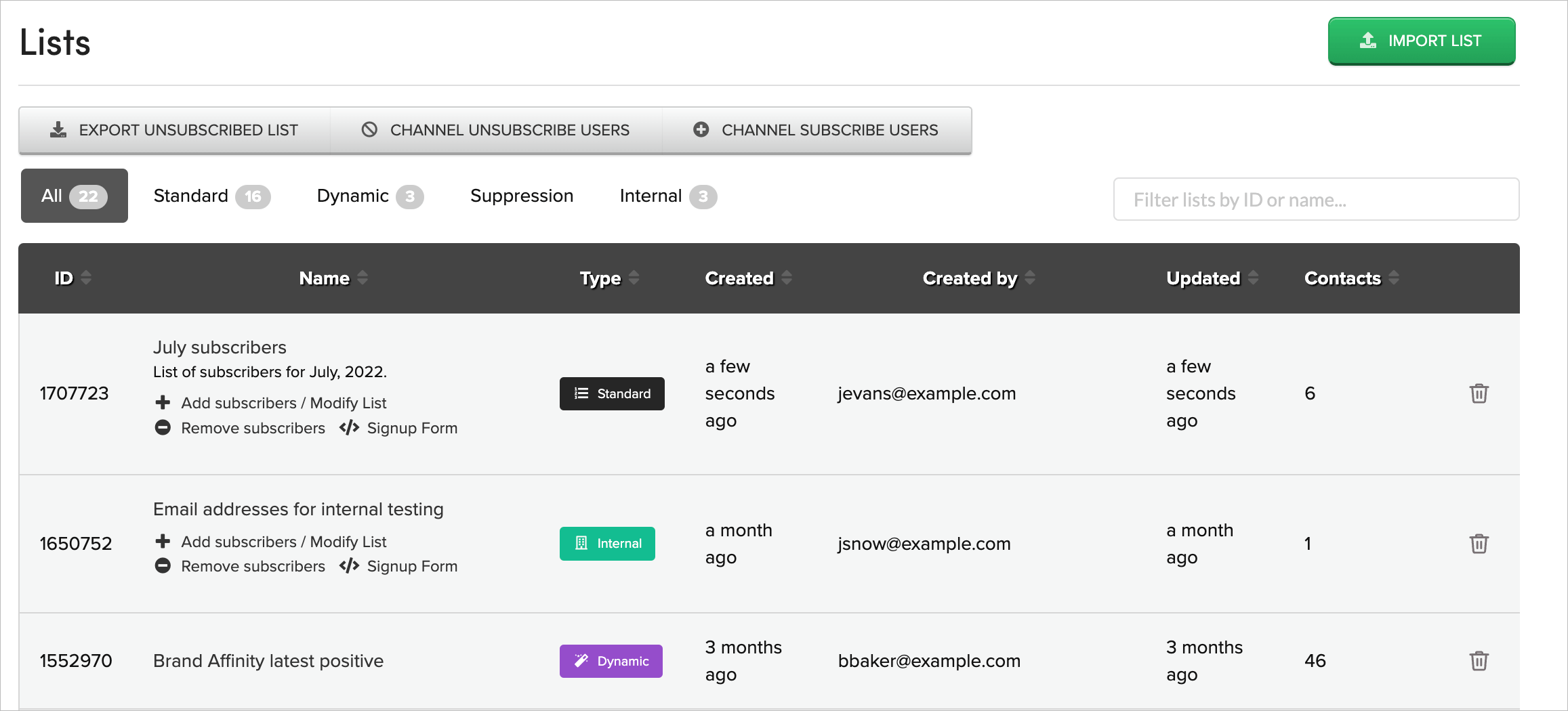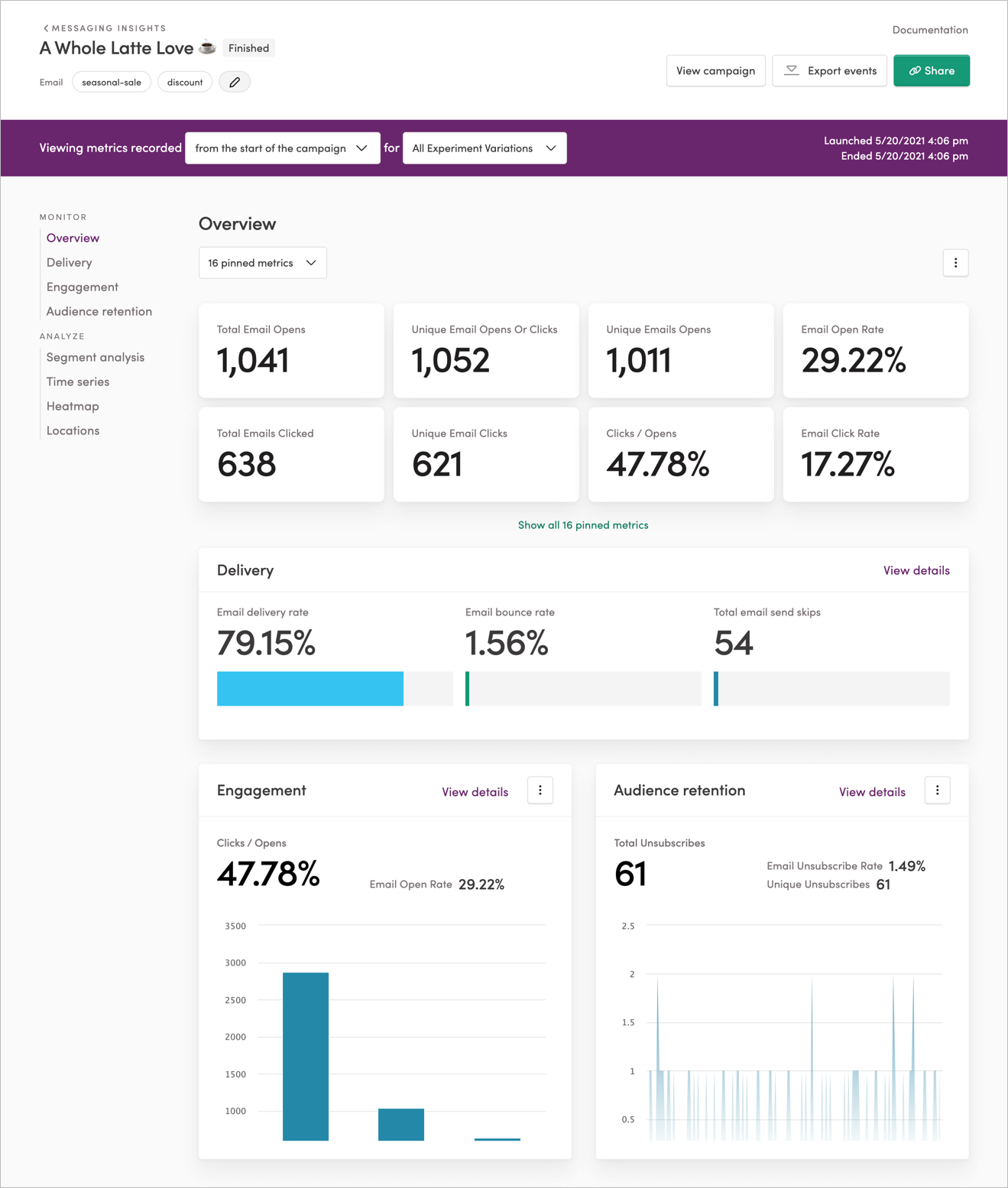- Premium features included
- No hidden costs or usage limits
- Scale from startup to enterprise


Picture this: you’re running marketing for a growing ecommerce brand, juggling emails, SMS, and push notifications across three different tools. Sound familiar? That’s exactly the mess Iterable promises to clean up. But here’s the thing – at enterprise pricing and with a learning curve that’ll make your head spin, is it really worth it?
Iterable is basically a Swiss Army knife for B2C marketing – it bundles email, SMS campaigns, push notifications, in-app messages, and even direct mail into one platform. Think of it as the conductor of your marketing orchestra, making sure every channel plays in harmony. The platform runs on what they call “moments-based marketing,” which is fancy talk for sending the right message when your customer actually cares.
What sets it apart from your average email tool? It’s built for companies that have outgrown the basics. We’re talking businesses with hundreds of thousands of customers, complex data needs, and marketing teams that want to get clever with personalization. Unlike simpler tools like Mailchimp, Iterable assumes you’re ready to get your hands dirty with advanced segmentation and workflow automation.
The platform’s API-first design means it plays nice with pretty much any tech stack you’re running. But here’s the catch – while marketers can run campaigns without bugging developers every five minutes, you’ll still need some technical chops to really make it sing. Companies in ecommerce, media, fintech, and travel tend to love it, probably because they’re dealing with the kind of customer complexity that would make Excel cry.
Let’s start with the bread and butter—email campaigns. Iterable doesn’t just let you send emails; it lets you send ridiculously personalized ones. Their Catalog feature is like having a personal assistant who remembers everything about every customer. You can drop in product recommendations, personalized content blocks, and dynamic pricing without breaking a sweat.
The drag-and-drop editor works well enough for non-coders, but developers will appreciate that they can dive into the HTML when needed. One cool trick? They offer these creative layouts called Cinemagraphs and Hero Banners that actually get people to stop scrolling. The A/B testing goes deeper than just subject lines – you can test everything from send times to entire email designs simultaneously.
But here’s where it gets interesting: their Brand Affinity scoring uses AI to figure out who’s likely to engage with your emails. It’s like having a crystal ball that tells you who actually wants to hear from you. Compared to simpler tools like Klaviyo, it’s overkill for basic newsletters but perfect when you’re managing multiple customer segments with different engagement patterns.

The template situation is a bit of a mixed bag. You won’t find hundreds of pre-made designs like in some competitors, but what’s there is solid and industry-specific. Each template automatically adjusts for mobile, desktop, and that weird in-between tablet size nobody talks about.
Where Iterable shines is customization. Using HandlebarsJS (don’t worry, you don’t need to know what that means), you can create logic that would make a programmer jealous. Want to show different content based on weather, location, or what someone bought last Tuesday? Done. The snippet system is genuinely useful – create a footer once, use it everywhere, update it in one place when your lawyer makes you add more fine print.
The template inheritance thing is neat too. Set up your brand guidelines once, then let regional teams customize without going rogue on your fonts.
This is where Iterable really flexes. Their Studio workflow builder looks like a flowchart your business school professor would love, but it’s actually intuitive once you get the hang of it. You’re essentially drawing out customer journeys—abandoned cart? Send an email. Still abandoned? Send an SMS. Still nothing? Maybe a push notification with a discount.
The platform responds to real-time triggers across all your channels. Customer browsed but didn’t buy? Boom, targeted email within the hour. Their new Journey Assist feature uses AI to help build these workflows using plain English. Just type “create a welcome series for new subscribers” and watch it work.
What’s really clever is the predictive goals feature. Tell Iterable you want to increase purchases, and it’ll automatically adjust your workflows to optimize for that outcome. It’s like having a marketing consultant that never sleeps.

Managing subscribers in Iterable feels like having superpowers. The platform handles millions of user profiles without breaking a sweat, and you can segment based on literally any data point you can imagine. Bought red shoes on a Tuesday while it was raining? That’s a segment.
The AI-powered segmentation is genuinely helpful. Instead of manually creating segments, Iterable can identify patterns you didn’t even know existed. The real-time updates mean your segments stay fresh – no more sending “welcome back” emails to someone who just bought yesterday.
One standout feature is how it merges user data. Someone browses anonymously, then creates an account? Iterable connects those dots automatically. The subscription center is GDPR-compliant (boring but necessary), letting users pick exactly how they want to hear from you.

Here’s where Iterable drops the ball a bit. No native landing page builder. Zip. Nada. You’ll need to use something else like Unbounce or Instapage, which honestly feels like a miss for a platform this sophisticated.
What they do have is solid form functionality. Embedded forms that capture data directly into user profiles work smoothly. The progressive profiling is smart – instead of asking for everything upfront, it gradually learns about users over multiple interactions. Nobody likes filling out War and Peace-length forms.
The form API is robust if you’ve got developers handy. Multi-step forms, conditional logic, all the fancy stuff is possible. It just requires more work than competitors with built-in landing page builders.
The analytics dashboard gives you that “mission control” feeling – everything you need to know at a glance. Real-time performance metrics across all channels show you what’s working and what’s tanking. Open rates, clicks, conversions – the usual suspects are all there.
Where it gets interesting is the attribution modeling. Finally, you can prove that email you sent three weeks ago actually influenced today’s purchase. The experimentation framework is robust, calculating statistical significance so you know when a test result actually matters (spoiler: usually takes longer than you think).
Cohort analysis reveals patterns over time – are customers who joined during Black Friday more or less valuable long-term? The data export options are solid for teams that live in Excel or Tableau. One gripe from users? The in-platform reporting could be more flexible. Sometimes you just want to build that one weird report, and Iterable makes you export to do it.

Iterable’s integration game is strong. Really strong. The REST API gives you access to basically everything, making custom integrations possible for even the weirdest use cases. Native integrations with the big players – Salesforce, Shopify, Segment, Snowflake – work out of the box.
The webhook system means real-time data sync. Customer makes a purchase? Update their profile instantly. Inventory runs low? Trigger a back-in-stock campaign automatically. It’s the kind of thing that makes marketing ops teams genuinely happy.
The platform plays especially nice with data warehouses, which matters more than you’d think. All that customer data sitting in your warehouse? Iterable can use it without complicated ETL processes.

Support varies wildly depending on your plan. Basic tier? You’re getting email support and searching through documentation. Enterprise? You’ve got a dedicated Customer Success Manager who knows your business inside out.
The Iterable Academy deserves props – comprehensive training that actually teaches you marketing strategy, not just button clicking. The technical documentation is thorough if a bit dry (shocking, right?). The community forum is surprisingly active, with users sharing workflows and troubleshooting together.
Where they fall short? Response times for non-enterprise customers can be sluggish. Users report waiting days for answers to critical issues.
Let’s talk money – or try to. Iterable’s pricing is about as transparent as mud. You’ll need to go through sales, share your life story, and probably sacrifice a goat to get an actual quote. Based on what users report, here’s the rough breakdown:
Plan Type
Starting Price
Key Features
Best For
Custom Starter
$500+/month
Email, basic automation, standard support
Growing businesses with <100K contacts
Growth
Custom pricing
Multi-channel, advanced segmentation, API access
Mid-market companies scaling operations
Enterprise
Custom pricing
Unlimited users, dedicated CSM, custom integrations
Large organizations with complex needs
The dirty secret? Everything’s negotiable. Users report getting discounts for annual commitments, threatening to leave, or catching sales reps at the end of the quarter. SMS comes with a 25,000 message minimum – great if you’re sending that much, expensive paperweight if you’re not.
Renewals typically include a 3-7% increase, though aggressive negotiation can flatten that. Unlike Sender’s “here’s the price, take it or leave it” approach, Iterable’s custom pricing is either refreshingly flexible or frustratingly opaque, depending on your perspective.
Users consistently rave about the workflow automation – it’s powerful enough to handle complex scenarios but visual enough that non-engineers can use it. Once you get the hang of it, building campaigns becomes almost addictive. The platform’s ability to store hundreds of custom attributes per user means you can get as granular as your data allows.
The AI features aren’t just marketing fluff. Send Time Optimization actually improves open rates, and Channel Optimization figures out whether someone prefers email or SMS. It’s the kind of smart automation that makes you look like a marketing genius. The platform scales beautifully – whether you’ve got 10,000 or 10 million users, performance stays solid.
Customer success teams (when you can afford them) know their stuff. They’re not just support agents reading scripts; they understand marketing strategy and can actually help improve your campaigns. The API flexibility means your developers can build pretty much anything they can dream up.
Let’s be real – the learning curve is brutal. Plan on at least a month before anyone’s comfortable, and that’s with training. The segmentation interface, while powerful, feels like it was designed by engineers for engineers. Sometimes you just want to create a simple segment without a PhD in Boolean logic.
Hidden fees are a constant complaint. Oh, you want to add a new sender address? That’ll cost extra. Need to increase your custom events? More money, please. The lack of pricing transparency makes budgeting a nightmare. Performance can get sluggish with huge data sets or complex queries – not often, but enough to be annoying.
The reporting, while comprehensive, lacks flexibility. Want to create that one specific report your CEO demands? You’re probably exporting to Excel. And seriously, no landing pages in 2025? That’s just weird for a platform this sophisticated.
Best For
Not Recommended For
B2C companies with 100K+ customers
Small businesses with simple email needs
Teams running campaigns across 3+ channels
Single-channel marketing (just email or SMS)
Data nerds who love segmentation
Teams without any technical resources
Ecommerce and subscription businesses
B2B companies doing basic lead nurturing
Companies with complex customer journeys
Bootstrapped startups watching every penny
If you’re a B2C company drowning in customer data and channel complexity, Iterable might be your lifeline. Ecommerce brands especially love it – the abandoned cart flows alone can pay for the platform. You’ve got customers across email, SMS, and mobile? Perfect. Iterable turns that chaos into coordinated campaigns.
Media companies and subscription services get huge value from the engagement scoring and churn prediction. When losing a subscriber costs real money, having AI predict who’s about to leave becomes invaluable. The platform shines when you’ve got multiple brands or product lines – manage them all from one place without losing your mind.
You’ll need at least one technical person comfortable with APIs and data structures. Not necessarily a developer, but someone who doesn’t panic at the sight of JSON. Companies with dedicated marketing ops teams will squeeze every drop of value from the platform.
Running a small business with 5,000 email subscribers? Save your money. Sender’s free tier will do everything you need. Iterable is like buying a Ferrari to drive to the grocery store – impressive, but unnecessary.
If you just need basic email campaigns with some light automation, you’re paying for features you’ll never use. B2B companies doing simple lead nurturing might find HubSpot or Marketo better suited to their sales-focused needs. No technical resources? The implementation alone will make you cry.
Some users complain about support responsiveness for non-enterprise accounts. If you need hand-holding or immediate answers, the lower-tier support might frustrate you. And if you absolutely need built-in landing pages, look elsewhere—Mailchimp or GetResponse has you covered.
With 691 reviews and a 4.5-star rating, Iterable clearly does something right. Users love the workflow builder – once they figure it out. The phrase “steep learning curve but worth it” appears in reviews constantly. G2 named them a leader across nine categories, which is basically the software equivalent of winning multiple Oscars.
The segmentation capabilities get consistent praise. Users can slice and dice their audience in ways that would make a sushi chef jealous. But it’s not all roses – performance complaints pop up, especially when dealing with massive data operations.
The platform scored particularly well in emerging markets like Latin America and APAC, suggesting it handles international complexity well. Most telling? Even users who complain about specific features rarely talk about switching. Once you’re in, you’re usually hooked.
Capterra reviewers highlight the cross-channel orchestration as the killer feature. Finally, one place to manage everything instead of juggling multiple tools. The UI gets mixed reviews – clean and intuitive for some, overwhelming for others. Probably depends on whether you’re coming from Excel or another enterprise platform.
The customer success team earns frequent shout-outs, though mainly from enterprise customers who actually get dedicated support. The integration capabilities impress technical users – “if it has an API, Iterable can probably connect to it” summarizes the sentiment.
The big complaint? Hidden fees. Users feel blindsided by charges for things they assumed were included. Creating a new sender address costs extra? That’s the kind of surprise nobody wants. The lack of pricing transparency before sales calls frustrates potential buyers doing research.
Sender is like Iterable’s approachable younger sibling. Sender wins on simplicity – you can start sending emails in minutes, not months. The free tier is genuinely useful, and pricing is transparent. No sales calls, no negotiation, just pick a plan and go.
But Iterable plays in a different league for data handling. Hundreds of custom fields versus Sender’s basics. Real-time behavioral tracking versus convenient email reports.
For teams under 50,000 contacts doing email-only campaigns, Sender probably makes more sense. The cost difference could fund other marketing initiatives. But once you need multi-channel coordination or complex automation, Iterable’s sophistication justifies its premium.
Think of it this way: Sender gets you from A to B. Iterable helps you understand why customers go from A to B and optimizes the journey.
The Iterable versus Klaviyo debate is real in ecommerce circles. Klaviyo’s ecommerce integrations are deeper – it speaks Shopify fluently while Iterable needs an interpreter. G2 users rate Klaviyo’s segmentation 10/10 versus Iterable’s 8.2, which stings a bit.
Klaviyo’s pricing transparency wins points. You can calculate costs yourself without enduring a sales pitch. Their email templates are prettier out of the box, and the platform feels more polished for pure ecommerce plays. But Iterable handles channel diversity better. Push notifications, in-app messaging, even direct mail – Klaviyo can’t match that range.
For single-brand ecommerce? Klaviyo might edge ahead. Multi-brand, multi-channel, or non-retail? Iterable takes it. Klaviyo is the specialist; Iterable is the generalist. Choose based on whether you need depth or breadth.
While Iterable targets B2C businesses in fintech, travel, and consumer apps with its advanced data integration and analytics capabilities, Omnisend focuses specifically on ecommerce businesses using platforms like Shopify and WooCommerce.
The key differentiator is complexity versus simplicity: Iterable offers powerful, customizable workflows and sophisticated A/B testing but comes with a steep learning curve and higher price point, whereas Omnisend provides a user-friendly interface with pre-built e-commerce automations starting at just $16/month.
For most businesses, Omnisend emerges as the clear winner with higher user ratings and better overall value. Unless you need enterprise-level complexity and have the budget to match, Omnisend’s combination of ease-of-use, ready-to-deploy ecommerce features, and affordable pricing makes it the smarter choice for growing online stores.
So, is Iterable worth it? Like asking if a Swiss watch is worth it – depends entirely on what you need. For enterprise B2C companies juggling multiple channels, massive customer databases, and complex personalization needs, Iterable delivers. The investment (both money and time) pays off through better engagement, cleaner operations, and genuine marketing intelligence.
But let’s not pretend it’s for everyone. Small businesses will feel like they’re using a rocket ship to cross the street. The platform demands commitment – technical resources, training time, and a budget that won’t make your CFO faint. That opaque pricing remains frustrating, and the learning curve will test your patience.
If you’re choosing between Iterable and simpler alternatives like Sender, ask yourself: Do I need a marketing platform or a marketing ecosystem? Simple email needs don’t justify Iterable’s complexity.
But if you’re ready to graduate from basic campaigns to orchestrated customer journeys across every channel, Iterable might be exactly what you’re looking for. Just go in with eyes open, budget flexible, and patience ready. The payoff is real, but so is the journey to get there.
